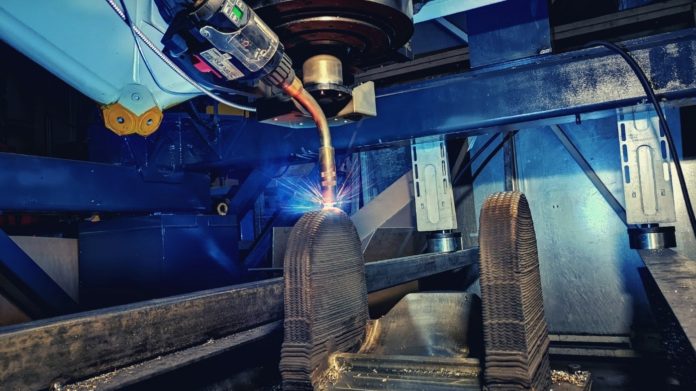In the additive manufacturing industry, various terms can often be used to refer to the same thing. The concept of Mobile Hybrid Manufacturing seems relatively new, but the concept refers to a mobile solution that could be used in-situ – in environments that are not always industrial facilities –.
Equipment deployed for mobile solutions often require a small installed footprint in a confined or restricted space just like the additive and subtractive manufacturing developed by METROM.
To improve the user experience on this “mobile machine tool”, the manufacturer parallel kinematic machine tools, has integrated ModuleWorks hybrid toolpath planning software into its pentapod machining centers.
For those who do not know the company, ModuleWorks is a supplier of CAD/CAM software components that continuously works with companies across the AM field to enhance the manufacturing experience of engineers.
In a press communication, ModuleWorks explains that instead of taking workpieces to the machining center, METROM mobile machining centers come to the workpiece for convenient, just-in-time on-site manufacturing. Depending on the production scenario, this can significantly reduce production costs as well as the CO2 footprint. Combining additive and subtractive processes in a single machining center makes mobile manufacturing even more attractive because only one machine needs to be transported. Machining precision is comparable with standard CNC milling machines due to special calibration of the center spindle position, while fewer mechanical elements and a toolpath engine with inverse kinematics increases machine reliability.
The press communication also states that METROM uses the ModuleWorks software for offline toolpath programming to automatically generate high-precision, collision-free hybrid toolpaths that enable the METROM machining centers to offer Wire-Arc Additive Manufacturing (WAAM) alongside subtractive milling strategies. The toolpath algorithms support up to 6-axes for 3D geometries while the inverse kinematics provide even more axes for robotic manufacturing of geometrically complex workpieces. Overhang geometries are considered during toolpath generation to eliminate the need for support structures and simplify the machining process.
Remember, you can post free of charge job opportunities in the AM Industry on 3D ADEPT Media or look for a job via our job board. Make sure to follow us on our social networks and subscribe to our weekly newsletter : Facebook, Twitter, LinkedIn & Instagram ! If you want to be featured in the next issue of our digital magazine or if you hear a story that needs to be heard, make sure to send it to contact@3dadept.com






